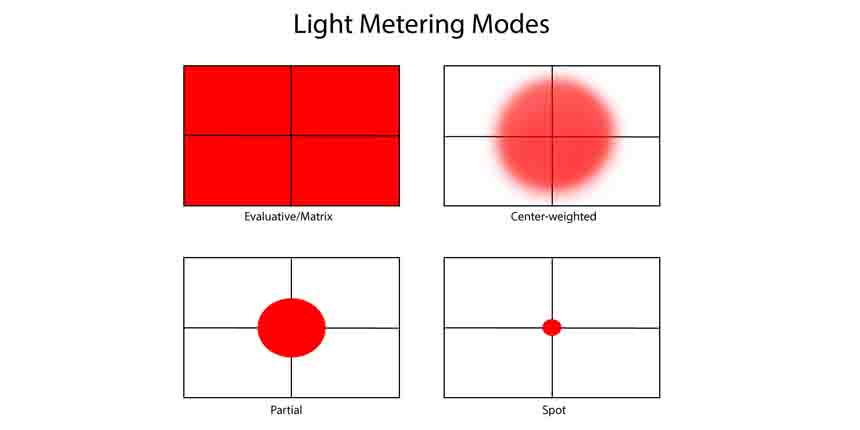
May 01, 2018 Written by Ashish rai Metering Types

Metering type
1.In photography, the metering mode refers to the way in which a camera determines the exposure.
2. Metering (Viewfinder Photography) ... Metering is used to measure the brightness of the subject. The camera optimizes exposure by adjusting shutter speed, aperture (f-number), and ISO sensitivity according to the brightness of the subject, which is measured using the camera's built-in metering sensor.
3. Today, every DSLR has an integrated light meter that automatically measures the reflected light and determines the optimal exposure. The most common metering modes in digital cameras today are: Matrix Metering (Nikon), also known as Evaluative Metering (Canon)
4. Camera meters work great when the scene is lit evenly. However, it gets problematic and challenging for light meters to determine the exposure, when there are objects with different light levels and intensities.
5. Using the whole frame for determining the correct exposure is not always desirable. What if you are trying to take a headshot of a person with the sun behind? This is where center-weighted metering comes in handy. Center-weighted Metering evaluates the light in the middle of the frame and its surroundings and ignores the corners.
6. Spot Metering only evaluates the light around your focus point and ignores everything else. It evaluates a single zone/cell and calculates exposure based on that single area, nothing else. I personally use this mode a lot for my bird photography, because the birds mostly occupy a small area of the frame and I need to make sure that I expose them properly, whether the background is bright or dark.
7. Matrix Metering or Evaluative Metering mode is the default metering mode on most DSLRs. It works similarly to the above example by dividing the entire frame into multiple “zones”, which are then all analyzed on individual basis for light and dark tones. One of the key factors (in addition to color, distance, subjects, highlights, etc) that affects matrix metering, is where the camera focus point is set to.
8. Partial metering is one of four modes found mostly on Canon cameras to help measure a subject's brightness, enabling the photographer to take a correct exposure. Spot metering on Nikon cameras work very similar to partial metering on Canon cameras.
9. Active D-Lighting is a technology that optimizes high contrast images to restore shadow and highlight details that are often lost when strong lighting increases the contrast between bright and dark areas of the image.
10.Long Exposure Noise Reduction (LENR) is an important function available on most DSLRs and mirror less camera bodies, which can be turned on or off as desired. During a long exposure, unacceptable noise may result because the sensor gets warm after several seconds.